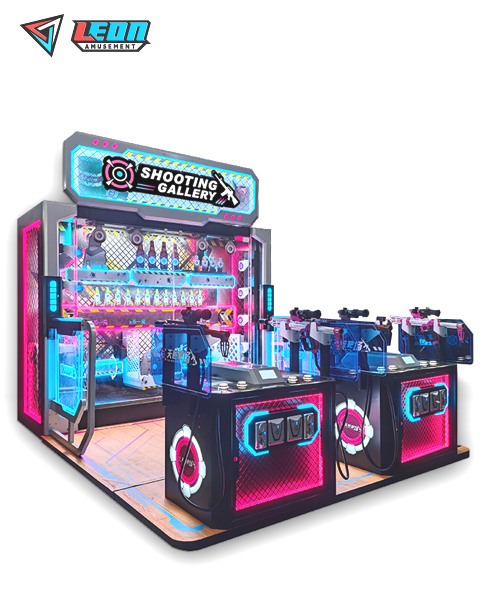Arcade games feature easy-to-learn but hard-to-master gameplay. “Pac-Man” has simple controls, but achieving high scores of over 1 million points requires extensive practice. The game design focuses on fast-paced action, with each game typically lasting 2 to 10 minutes, suitable for quick entertainment. Leaderboards encourage player competition, with top ten rankings in “Street Fighter” averaging 1 to 2 weeks. Classic pixel graphics and sound effects, like the retro style of “Breakout,” are beloved by players. Additionally, large game cabinets and precise control sticks enhance immersion and gameplay experience.
Table of Contents
ToggleEasy to Learn, Hard to Master
They are games made to be enjoyed by players new enough for quick pick-up-and-play controls. The controls for “Pac-Man” are also very simple; players have to use the directional keys on their keyboard and can be up and running in no time. But if you want the 1s or move on to higher levels of difficulty, then that requires a very deep knowledge of how things work. Take “Super Mario Bros.,” for instance, where the game starts with basic running and jumping but naturally ramps up into staggering level design, which requires multiple actions (jumping over gaps), avoiding threats (enemies) and collecting resources in order to survive.
Arcade games have an “easy to learn, hard to master” design that makes them ideal for all types of players. So it provides instant, fun feedback for the new player while there is more to learn and do with equal cuddliness-to-deadly-fish-ratio implied as you head up that high score ladder. The replay rate of arcade games is often very high, due primarily to the meshing between time and memorization necessary for proficient play such that even semi-skilled players will usually be able to read news short increment a token easy level; more dedicated players will probably pride themselves on completing a quarter glass user harder levels with near-perfect completion.

High Competition and Social Interaction
Player standings and high score records are designed to get players competing against one another in the classic arcade game. A leaderboard in “Street Fighter” tracks all of the players around America and on Daly’s street, keeping track not only of high scores but progress as well. According to leaderboard data, most top ten standings last 1–2 weeks because players are constantly upgrading new monsters. Historically, the “champion wall” at arcades has been virtually a place where top players could rub it in your face, but it also allows for showing off player skills and gives motivation.
On a social level, people share space and play video games. On the best-of boards at arcade game halls, jaunty “champion walls” where kids come to tape up their highest scores and goad others into a fight. Games are even scored by regional and national leaderboards, expanding the social circles of players with a large community to interact. This social interaction not only makes the game more fun it also encourages players to communicate and make friends with one another.
Fast-Paced and Short Gameplay
Short challenges core principle in the design of arcade games. In the “Street Fighter” series, a round does not exceed 2-5 minutes, for example. It was designed for modern, on-the-go lifestyles and made it easy to find short snacks so that players can enjoy games in a matter of minutesIEnumerator-In which breaks.
From the arcade perspective, a game design with fast pacing could also help venue interaction and profitability. Playing a game quickly allows them to move on to the next play faster, making it quicker for more players in line and, hence, better utilization of the machine, generating revenue. It satisfies the entertainment needs of players and improves arcade management efficiency as well.

Classic Visuals and Sound Effects
Arcade games are known for their distinctive visuals and sound effects. A common method is to use pixel graphics and simple sound effects for a section of the game so that it feels like playing an old-school retro title; “Breakout” does this. This is not only a style born out of necessity but one that resonates in the minds and memories, albeit subversively.
This is what gives arcade games a cool factor from the standpoint of cultural impact. Retro aesthetics and sound effects allow them to stand out in gaming history. The beep-boop of early 8-bit and 16-bit sound effects have stayed imprinted in the memories of multiple generations, and those bloody bloops are now universally recognized as some gaming classics. The retro style of this game is quite attractive to any player, new or old. Keeping the arcade games exciting alive for many days now.
Hardware Design and Game Mechanism
Hardware designs such as large game cabinets, control sticks, and buttons are used to enhance the gaming experience in arcade games. An arcade machine is usually a standard from above, as it has between 6 and 8 buttons in addition to the control stick and has an approximate height regarding cabinet of about 1.80 meters. Besides making the game more present, it also provides a free way to interact with extremes during gameplay physically.
The hardware design, if done the right way, will directly impact how immersive and smooth the experience is for players. The huge game cupboards and the exact control structure make it simpler for gamers to understand what they are doing, positively affecting their general interaction experience. Improved hardware design experience is more enjoyable and engaging; hence, the gaming narrative can be captivating, it’s a rich type of play.








